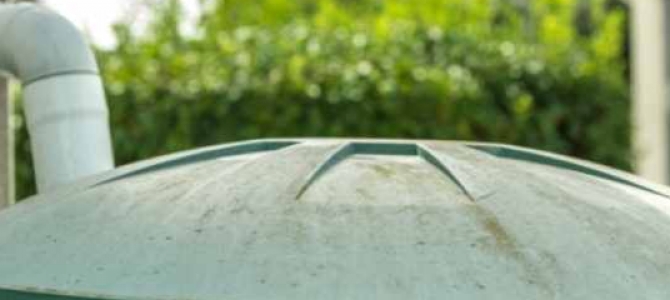 Shopping Cart
Shopping Cart
21 January 2022
How long will my water tank last?

Water tanks are becoming an increasingly popular investment in locations throughout New Zealand. The recent water shortages, especially in Auckland where water restrictions were in place for around 18 months, have led people to turn to water tanks as a way of collecting rainwater that falls during the wetter winter months that can be used without restriction during the hot and dry summers.
As the impact of climate change leads to hotter and drier summers, coupled with less rainfall in the winter and spring, a rainwater tank could be a really good investment for lots of homes. Not only are they a useful resource during a period of water restriction, but they can also save you money all year round on your water bill as you harvest the natural resource that falls from the sky – rain.
A water tank, however, is a significant investment. Depending on the size and material of the tank you decide to install, a water tank can cost anywhere from a few hundred dollars up to $10,000+ before you take into consideration the installation costs. This is a potentially significant investment, and you want to make sure you are investing in something that will last, so, just how long will a water tank last?
How often should you need to replace your water tank?
The answer to this question depends on so many factors that it is hard to put a precise timeframe on the life expectancy of a water tank, however, you can expect a tank to last anywhere from 10 years up to 30+ years depending on the material it is made from, where it is positioned and how much use it gets.
Materials
Water tanks can be manufactured from a number of different materials and the material you choose will have an impact on the expected lifespan of your water tank. Your choice of material will depend on a number of factors and you can read our recent post – Which type of water tank is best for the home? – to find out more about the different materials used and their benefits and features.
We will focus here on the expected lifespan of the various materials and hopefully give you an indication of how long you can expect your water tank to last.
Concrete
If you are considering installing a water tank as part of a new build, and that tank will be located underground, then concrete is the de facto choice of material. Plastic and steel water tanks cannot be installed below a very shallow depth and concrete makes the most sense. Concrete tanks can also be installed above ground, and you will still see a lot of these older tanks located throughout New Zealand. They tend to be a little less pleasing on the eye which is why we have seen other materials become a more popular choice for above-ground installations, however, they do have their benefits.
They are typically more durable than plastic and steel tanks making them a great option for those looking for a return on a long term investment. A lot of concrete tanks come with a 20-year warranty, and you can realistically expect a concrete water tank to last between 20-30 years. It is not unheard of them to last longer, especially today when they are often mixed with fixing materials like polymer that add extra water-resistance to the concrete.
As a lot of concrete tanks are buried underground, it’s important that they have a long lifespan as replacing them can be very disruptive and very expensive.
Polyethylene (Poly)
Polyethylene (Poly) is one of the most popular materials for water tanks today. These are more commonly known as plastic tanks or poly tanks, and they are extremely versatile both in terms of the shapes they can be moulded into and the ease of installation due to the fact that they are lightweight.
All poly water tanks must be constructed from materials that are of food-grade standard and if the water is to be used for drinking, cooking, washing etc. then they must also comply with the requirements of potable water standards.
Poly tanks are expected to last for a minimum of 10 years and could also last for up to 30 years depending on how frequently they are used and where they are positioned although 30 years would be an exception rather than the rule. Polyethylene can be recycled at the end of its lifespan, making it a more sustainable option than a concrete water tank.
Steel
Stainless steel is an alternative option to concrete and plastic when it comes to water tanks, although it is not as popular here in New Zealand. A stainless steel tank water tank would typically be used for a smaller installation as they are typically a more expensive alternative to concrete and plastic.
They do, however, have some benefits over concrete and plastic. They are easy to repair and can be patched with waterproof sealant and stainless steel does not degrade over time so they can definitely provide a longer-term solution than concrete and plastic.
Some warranties for stainless steel tanks can be 25 years and whilst stainless steel tanks can have issues with leaks, the fact that they are easier to repair means that their total lifespan can be longer than concrete and plastic.
Location
The geographical location of your water tank will also have an impact on the lifespan of the tank. The direct sun can have a detrimental impact on water tanks, especially poly tanks that can be damaged over time by the UV rays that can lead to early degradation of the plastic.
If you are located in a coastal town or city, the salty air can also speed up the degradation process of your water tank – particularly steel but also plastic tanks to a lesser extent. You can apply special treatment to steel tanks to aid with protection against the sea air.
If you have a tank located in your garden where it is prone to getting hit by sports balls like cricket, tennis or football, this can also lead to potential damage of the tank, especially concrete tanks stored above ground. If your tank is located in a high traffic area, where lots of people are walking or you are moving equipment like lawnmowers etc, plastic tanks are also susceptible to sharp objects to the positioning of your tank is important if you want to extend the lifespan of the tank.
Ground conditions
The conditions of the ground you are positioning your tank on can also have an impact. Where possible, you should aim to install your water tank, no matter the material, on a flat piece of ground. Uneven surfaces can have a detrimental effect on the lifespan of your tank as there may be wear and tear over time on the sidewalls from the weight of the water in the tank.
Water tanks should be installed on stable ground, and this will help to extend the life of your tank.
Tank use
What the tank is being used for will also be a determinant factor in the lifespan of a water tank. A water tank with clean fresh water kept in it will typically have a much longer lifespan than that of a tank with salt or chemical water kept in it.
It is also recommended that if a steel water tank is being used to store potable water - or water for drinking and household purposes - that the water tank be fitted with a food-grade tank liner both to ensure the long term integrity of the tank, but also to prevent any oxidised zinc or steel from making its way into the water supply due to long term contact with water.
Plastic tanks typically will not need a liner, as the tank itself is already constructed from food-grade plastic, but as with steel water tanks, the cleaner the water being used in the tank, the longer the tank will last.
Summary
The lifespan of your water tank depends on a lot of factors, however, you should realistically expect a water tank to last between 20-30 years if it is well maintained and well-positioned. This represents a very good investment given the expected increase in summer temperatures over the coming years, coupled with inconsistent annual rainfall. Becoming more self-sufficient when it comes to your water supply means you can continue to do the things that are not allowed during water restrictions like watering your garden and washing your car.
Water tanks have a huge number of benefits and if you are considering investing, make sure you read our recent post – Are rainwater tanks worth it? – where you will find lots of helpful information that will help you to decide whether it is a good investment for your property.
If you are thinking about installing a water tank, or you already have one on your property, and you are not sure how to manage and monitor the amount of water you are collecting, storing and using, we have the perfect solution.
At Smart Water, we have engineered the most advanced tank level indicator available that now offers full cloud connectivity.
Easy to install yourself, your Smart Water tank indicator provides you with all the information you need from our app or from one of our LCD displays. Find out how much water you consume on average from your tank, accurate pressure data and estimates on when your tank will run out of water-based on current usage.
Our Smart Water system can tell you how much water you have collected in your tank and over time, you will be able to calculate how much money you have saved by harvesting rainwater from your roof.
Find out more about our range of products or check out our FAQs for more information.
Frequently Asked Questions
What factors influence the lifespan of a water tank?
The lifespan of a water tank depends on its material, installation location, ground conditions, exposure to sunlight or coastal air, and the type of water stored. Tanks with clean freshwater generally last longer, while those exposed to harsh elements or chemicals may degrade sooner.
How does the material of a water tank affect its durability?
Concrete tanks are highly durable, lasting 20–30 years or more, and are ideal for underground installations. Polyethylene tanks typically last 10–30 years, depending on usage and placement, while stainless steel tanks can offer extended lifespans and are easier to repair if damaged.
Why is proper installation important for water tank longevity?
Installing a tank on flat, stable ground prevents stress on the tank walls and reduces wear over time. Location matters as well—avoiding direct sun exposure, high-traffic areas, or corrosive coastal environments can significantly extend the tank’s service life.
Related posts
· Where is the best place to put a rainwater tank?
